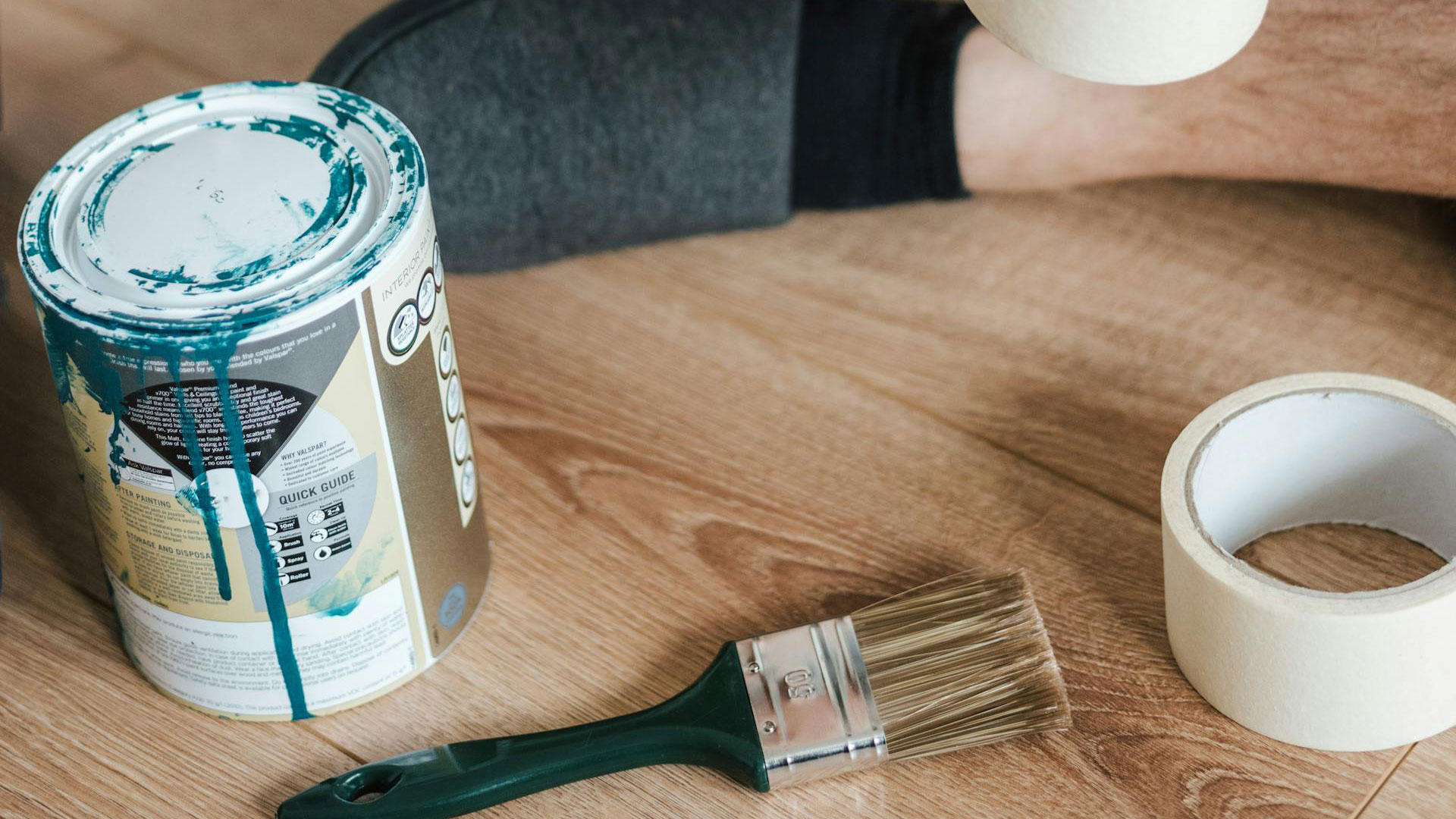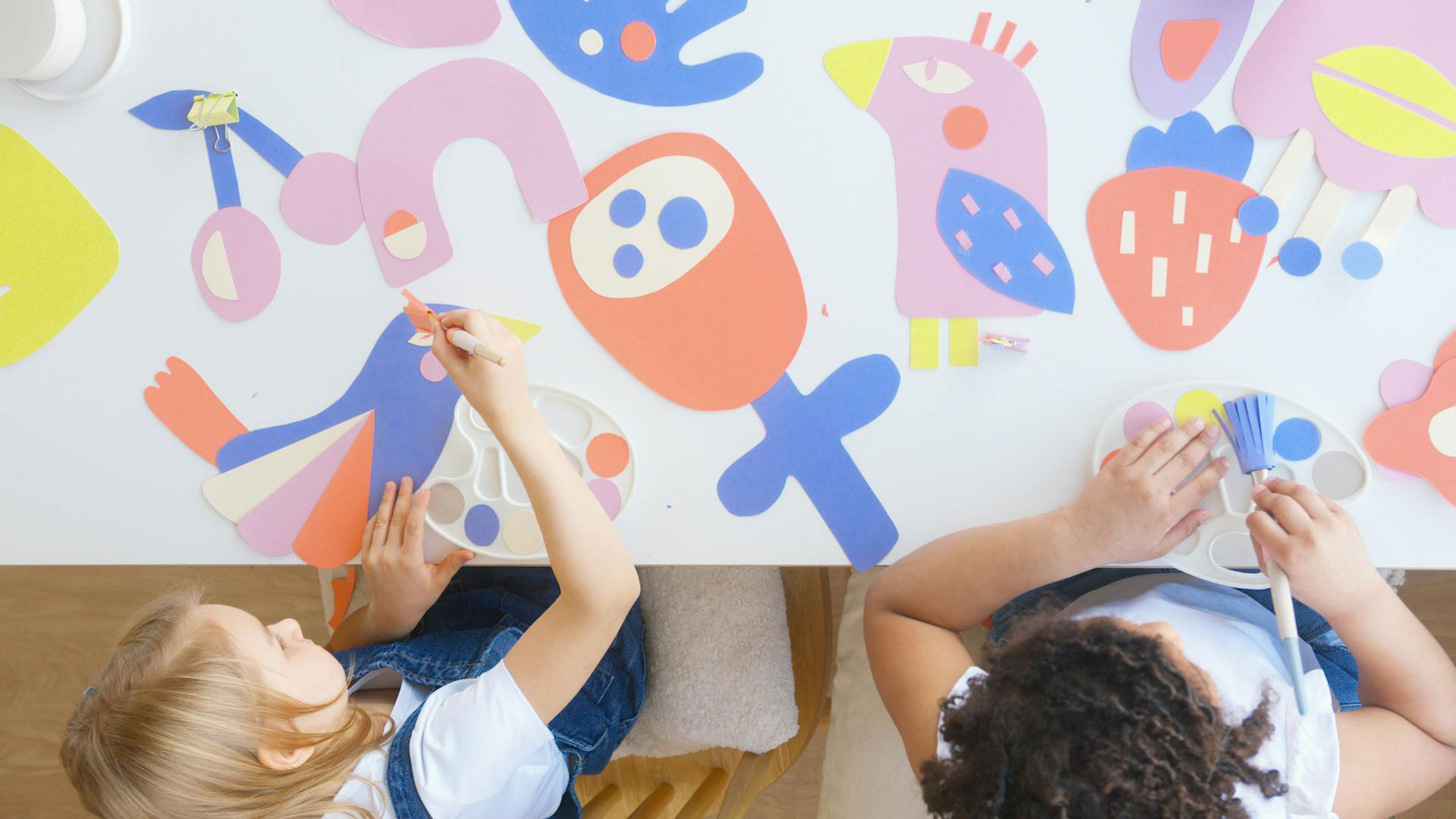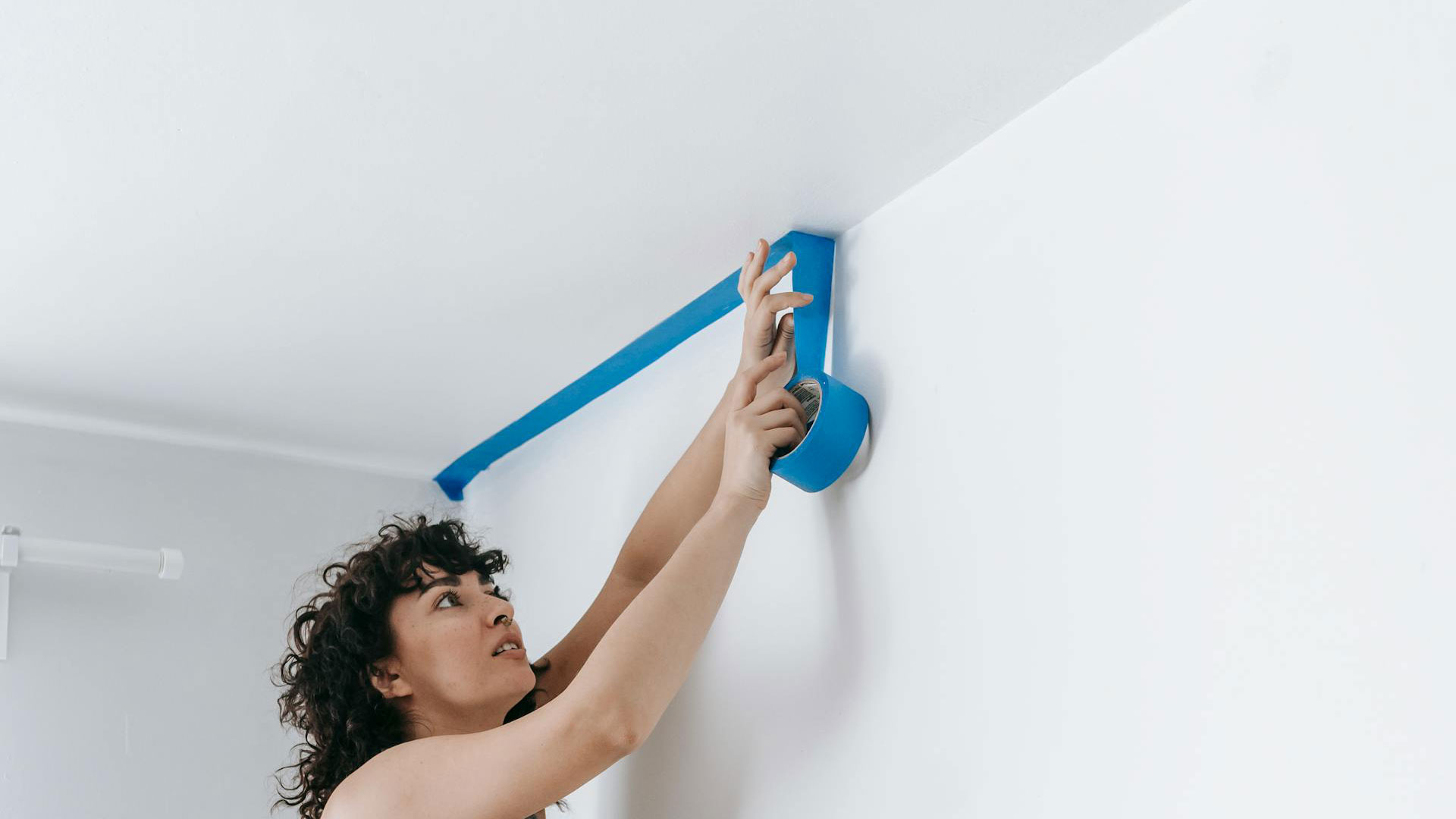Get Creative With Masking Tape: Creative Uses, DIY Hacks, and Expert Tips
Masking tape's claim to fame is aiding with paint projects. The product does so well in this context that many have dubbed it painter's tape. However, you can do more with a roll of masking tape than block off areas you want to keep paint-free. It's a versatile, indispensable tool for all kinds of tasks, from artistic endeavors to home improvement projects — if you know how to use it to your advantage. As with anything else, there are dos and don'ts for utilizing masking tape, and knowing what those are, regardless of your use of the tool, is the best way to make the most of it.
Tape Jungle's in-depth guide to masking tape breaks down common and out-of-the-box ways to use your roll of tape, plus provides a few DIY hacks and expert tips to maximize results. You'll want to break out the masking tape for more than just a paint job by the time you finish reading.
How to Achieve Perfect Paint Lines With Masking Tape
As the product's primary purpose is masking off areas during a paint job, it's only fitting to begin by covering the basics of effective masking tape use during painting.
Proper surface preparation is key to achieving painterly perfection with masking tape. Before doing anything else, make sure the surface has no dirt or dust; masking tape only adheres to clean, dry surfaces.
Then, apply the tape carefully, pulling in small strips and pressing it down hard as you go. Use an old credit card or putty knife. Let the tape set for at least an hour before painting and leave it for at least an hour when you're done. Any hopes of crisp, clean lines go out the window if the paint isn't dry to the touch when you remove the tape.
Creative Uses for Masking Tape in Home Decor Projects
A roll of masking tape might be the key to unlocking your inner interior designer. The popular adhesive is handy for several household projects, including painting geometric patterns or unique murals on a wall or refreshing old furniture with a new coat of paint.
Geometric Wall Patterns
Ditch the solid-colored accent wall for something more interesting, like a geometric pattern.
Painting a geometric accent wall is a fairly straightforward process. However, it does require patience, so be prepared to take your time before starting with step one.
How to Paint a Geometric Accent Wall
- Pick a wall to paint. If there are any photos, light fixtures, or decorations mounted on it, remove them and move any nearby furniture out of the way so you have plenty of room to work.
- Masking tape only sticks to clean surfaces, so use a damp cloth to wipe any dust or dirt off the wall. Let the surface dry completely before moving forward.
- Brush a coat of primer onto the wall. Then, follow up with your chosen background color. Let the base dry overnight.
- Use masking tape to design shapes on top of the base layer. Work in small strips, about six inches long. Make sure each piece of tape is applied flat to ensure it will leave a nice, crisp line behind when you remove it.
- Paint over the tape design. Use as few or as many colors as you wish. Be prepared to add extra coats of paint as needed.
- When the paint is dry to the touch, remove the tape slowly, keeping the strips at a 45-degree angle — shift to 90 degrees if the tape is sticking to the wall too much or otherwise uncooperative — as you pull.
Custom Wall Art
If you don't want to paint an entire wall but still want fun designs in your space, use masking tape to create a few pieces to hang instead.
Making masking tape resist paintings follows a process similar to painting a geometric accent wall. The difference is that instead of taping a design on the wall, you'll tape a pattern onto a canvas.
Furniture Makeovers
Just as you can use masking tape to paint a wall or canvas, you can use the adhesive to paint furniture. Give old pieces new life with a coat of paint, and use a few strips of masking tape to mask off areas you don't want to paint.
You can even use masking tape to give furniture a distressed appearance. Paint your piece. Then, after leaving the paint to dry for a while, press a strip of masking tape over the area you'd like to distress. Press the adhesive down hard, then rip it away.

Masking Tape Hacks for Crafting and DIY Projects
Masking tape's uses go beyond painting projects. Keep a few rolls nearby to add personalized touches to your items, organize your home, and temporarily patch up small breaks or tears.
Personalized Items
Duct tape is often the adhesive of choice for personalizing items. But masking tape is just as viable an option. Like duct tape, it comes in a variety of colors and patterns, allowing you to use it to express yourself and make your items more "you."
Cover a clear phone case or laptop cover with masking tape to freshen up your electronics, or make a plain notebook look more interesting with a few strips of brightly colored or patterned masking tape. The process is mess-free and easy. Plus, it only takes about five minutes of your time to get the job done.
Organization Solutions
No label maker? No problem! A strip of masking tape and a marker will do the trick. Keep your drawers, shelves, and pantries organized with masking tape labels. For maximum efficiency, create a color-coding system with different colored strips of masking tape.
You can even use masking tape to label your children's items for school. Kid's things can get misplaced easily, but adding a strip of tape with their name on it is a quick way to help a lost item get found.
Temporary Fixes
Don't use it as a long-term solution, but in a pinch, masking tape can hold a broken object together until you have time to come up with a more permanent fix. Take a crack in your drywall, for instance. You can keep it covered with a strip of masking tape until it gets patched.
Just make sure that whatever you're temporarily holding together with masking tape is smooth and clean.
Kid-Friendly Craft Ideas Using Masking Tape
Masking tape is a fun, low-mess, and vastly underrated tool for crafting with kids. Here are a few ways to bring the adhesive into play sessions.
Simple Crafts for Young Children
Bring masking tape into the younger kiddos' activity time with something fun and easy, like making sticky tape art.
Prep the activity by ripping strips of masking tape off the roll — bonus points if you use bright colors! — and sticking them onto a craft table. Then, allow your children to peel up the tape strips and reapply them to a piece of construction paper in whatever shape or sequence they like.
You might be surprised how excellent an exercise as simple as peeling and sticking tape is for building small hands' fine motor skills. If your child is old enough, let them use safety scissors to cut their tape strips; this adds another level of fine motor skill development.
Safety first! If scissors are involved, an adult should be too.
Educational Crafts
Nowadays, many clever parents use masking tape crafts to entertain and teach their children.
One educational idea is to help little ones learn numbers with masking tape. Have your child use strips of masking tape to form numbers on the floor. After they stick the tape down, they can trace the figure with their finger and identify it aloud. Then, the child can walk on each number and count. For a more active spin on the game, have them hop on each number — one time on number one, twice on number two, and so on.
Holiday and Seasonal Crafts
Crafting your own holiday decor makes any season a little brighter, and masking tape can be a crucial part of the process.
The possibilities are almost endless here. One idea is to create a festive design with masking tape strips and stick them to a piece of cardstock for Christmas cards. You can also fashion tape resist art-covered party decorations for Valentine's Day.

Masking Tape Art: Transforming Simple Tape into Masterpieces
Acrylic paint, oil paint, chalk, photography, sculpture, and watercolor are probably some of the first things that come to mind when you think of art mediums. However, tape is one, too.
Tape art's roots go back to the 1960s when urban artists began using different kinds of tape to create temporary installations and street art. The medium has grown in popularity over the years, and plenty of urban artists, like Max Zorn, call it their medium of choice.
Unleash your creativity with a tape mural. Attach masking tape pieces to a wall in the shape of whatever image you want to create. You can cut and layer pieces as needed. The best part of a tape mural is that fixing a mistake is as easy as peeling off the piece and re-sticking it correctly.
You can also use masking tape to fashion sculptures. A beginner-friendly way of doing this involves fashioning the sculpture out of pieces of aluminum foil before using masking tape to attach and cover the pieces.
If you're ambitious, challenge yourself to make something entirely out of masking tape. Artist Paula Reynaldi does this, using the adhesive to form intricately shaped, delicate installations.
Make the Most of Your Masking Tape
It's difficult to find a tool more versatile than masking tape. Not only is it excellent for its intended use — masking off areas you don't intend to color while painting — but it also proves itself indispensable in other areas, like home decor and art.
Don't discount masking tape's practical uses. It's not just for painters and artists; you can use it to meet your everyday needs. If you've got a roll of masking tape and a pen, you've got an inexpensive alternative to a label maker, and if something breaks around your house, you have a quick fix to hold it together until you can have it properly repaired.
Whichever creative ways you choose to use this tape, make sure you're using a high-quality product. Tape Jungle keeps a selection of top-notch masking tape products in stock, including:
- Professional masking tape: Heavy-duty professional masking tape is designed to adhere to multiple surfaces, including plastic, metal, rubber, and glass.
- General purpose masking tape: The quintessential masking tape, general purpose masking tape is supposed to be an all-purpose tool, able to handle jobs from indoor paint masking to sealing packaging.
- Colored masking tape: When using masking tape to unleash your inner artist, a roll of color masking tape is your best bet. The light-duty product sticks just as well as its plain counterpart; it just looks more fun while it works.
- Blue painters tape: Ask any professional painter what they use for effective paint masking, and they'll probably pull out the classic roll of blue tape.
- Thermal spray masking tape: Some jobs — coil wrap and crossover insulation, for instance — require an adhesive that can withstand high temperatures. That's where thermal spray masking tape comes in. Because it's specifically designed to be high heat resistant, you can rest assured a few strips of this will stick it out through hot temperatures — literally!
With this kind of variety, you'll be able to find a roll appropriate for whatever you're doing. If you're unsure which type of masking tape is best suited for your project, contact us for guidance.
Purchase a single roll or make a bulk tape order and see firsthand everything you can accomplish with masking tape. While you're on the site placing your order, don't forget to sign up for the company newsletter. Enter your email address to receive communication from Tape Jungle, including more DIY project ideas, news, and exclusive deals on products.


 Canadian Dollar
Canadian Dollar
